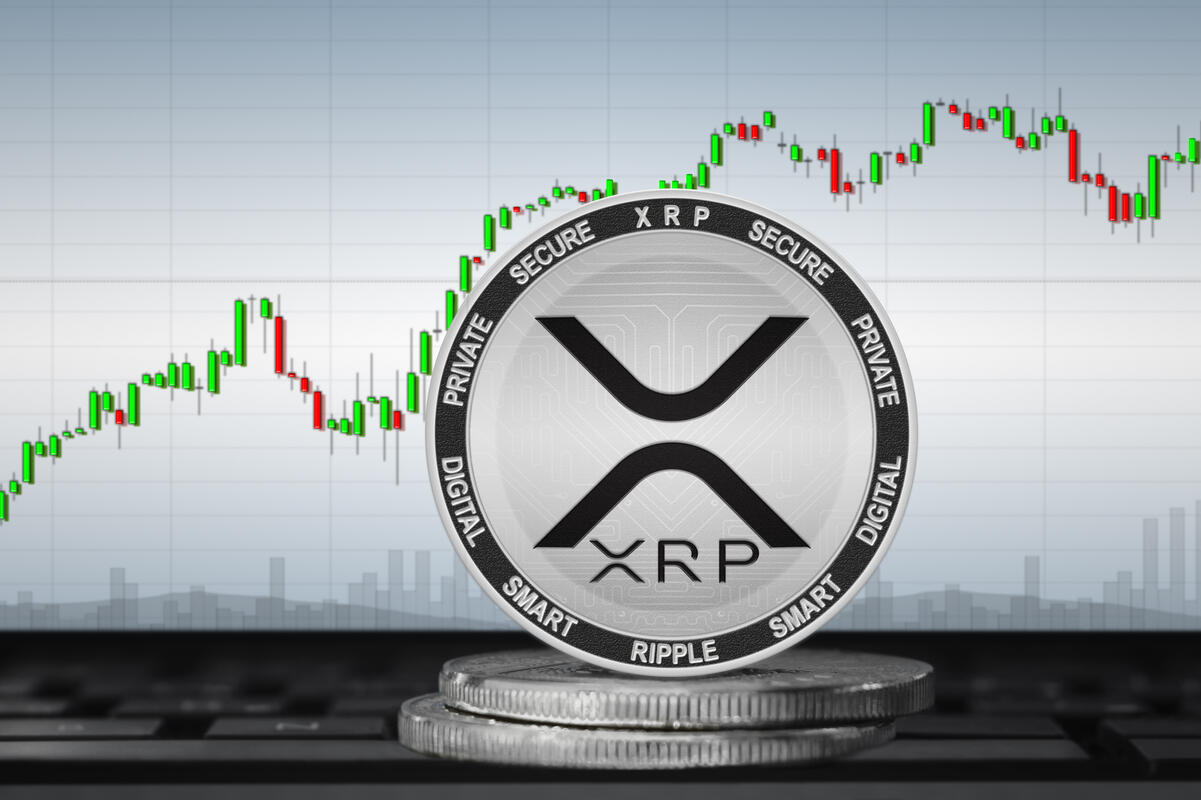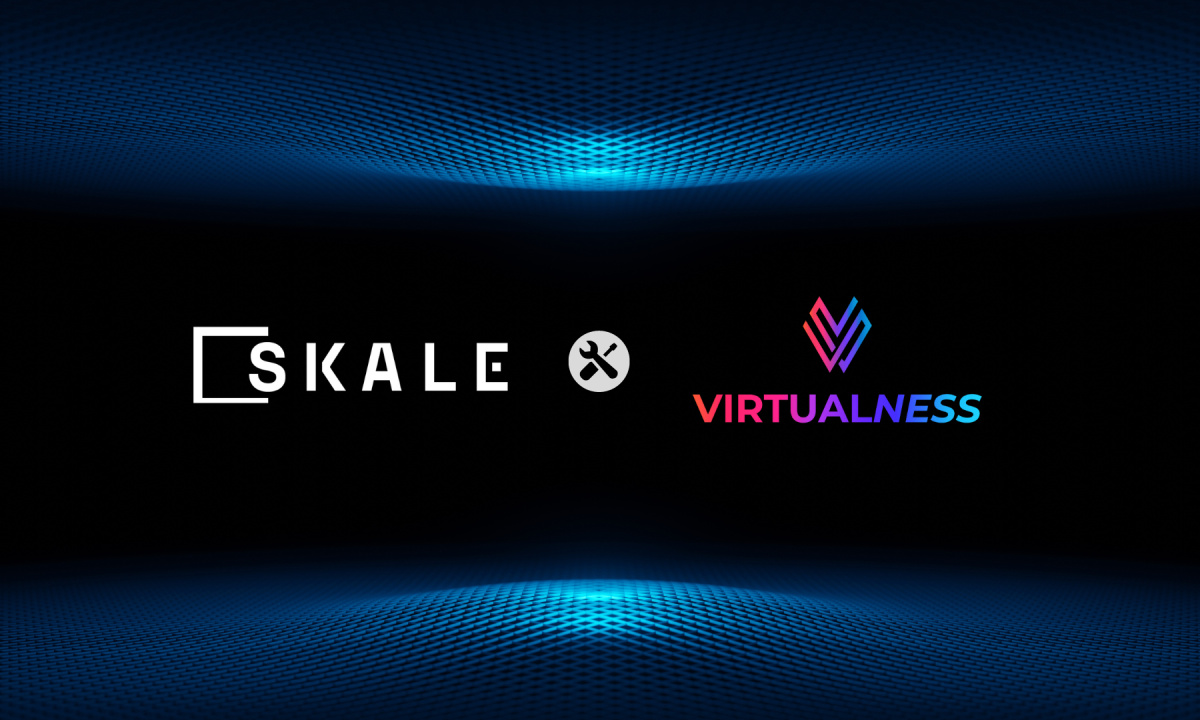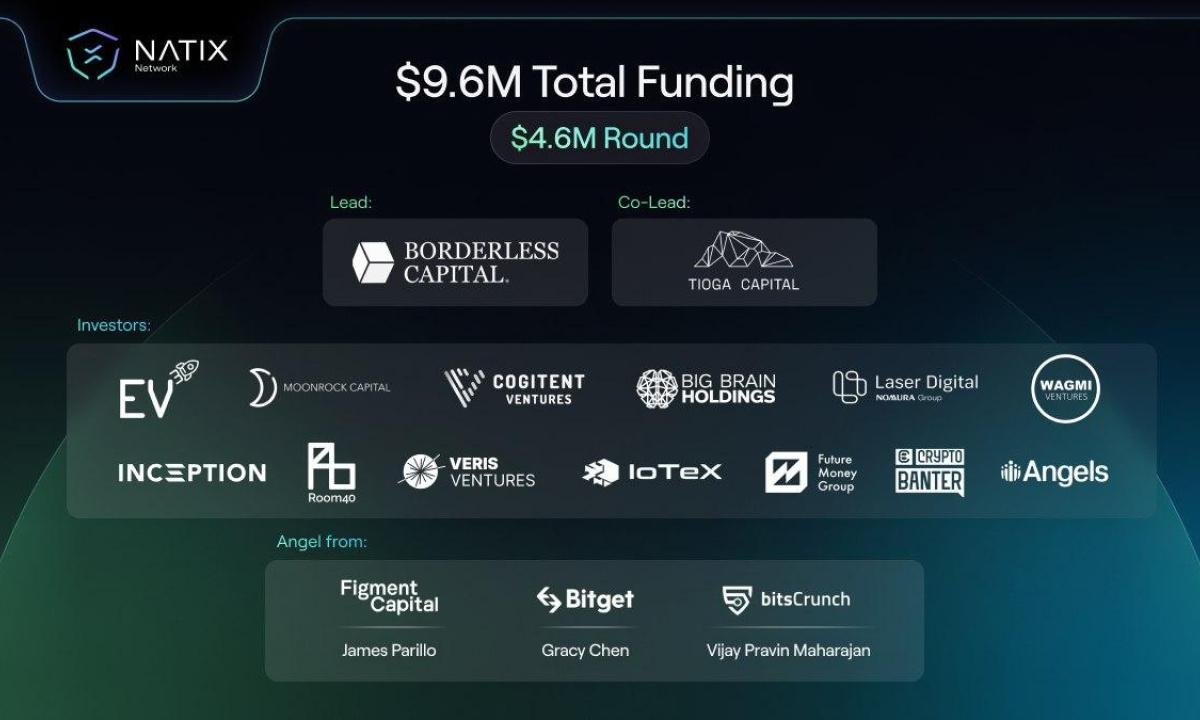Cryptocurrency
Ripple sends green signals to investors: what to expect from XRP price

The price of Ripple has begun to recover after falling 12% in the previous seven days. Readings from key onchain metrics suggest that an increase in XRP whale activity could be the culprit. Let’s see if the actions of big investors can be seen as a bullish sign.
Ripple whales are betting big
The XRP whales appear to be getting back into the big game. The chart below shows that from May 6 to 12, the number of over $1 million in daily transactions increased from 15 to 45. This signals that big investors are confident that the asset’s price will continue to rise and are betting on it.
XRP looks undervalued
The NVT indicator, which measures the market capitalization/transaction volume ratio, shows that a reversal may be imminent. As you can see in the chart below, between April 29 and May 12, the NVT has fallen 79% from 383.53 to 78.43. This proves that Ripple is currently undervalued.
The increased whale activity and low NVT values may attract investors looking to enter the market at a critical moment of trend reversal to uptrend.
Bulls seek to reclaim the $0.50 level
Over the past week, Ripple holders have defended the $0.40 support level and may push the price to the $0.50 mark. Most investors who have bought XRP in the past month have an unrealized loss of about 6%, according to MVRV, which measures the market value of an asset relative to its realized value. They aren’t likely to start selling the coins until the price reaches a break-even point around $0.45.
However, bears can still turn the tide if the price of XRP falls below $0.40. If that happens, XRP could fall to a support level of $0.35.
Earlier, we reported that the Bitcoin price (BTC) fell below $27,000 for the first time in 2 months.
Cryptocurrency
SKALE and Virtualness Global Partnership Reimagines Fan Engagement for Sports, Creators, and Enterprises Using the Power of Blockchain

[PRESS RELEASE – San Francisco, United States, April 25th, 2024]
Fans of Liga 1 & other organizations will have access to a superior experience on Virtualness with SKALE’s zero gas fees and instant finality.
SKALE Network, a gas-less EVM-compatible blockchain designed for secure Ethereum scaling, and Virtualness, a pioneering mobile-first platform powered by generative AI and blockchain, today announced a strategic partnership aimed at redefining digital engagement and empowering global sports fans, enterprises and creators alike.
With international athletic partnerships that include Liga 1, Asia’s largest and most prestigious football league, sports fans will have access to exclusive NFT moments, player cards, rewards, loyalty programs, real-world experiences, and exciting gamification on the Virtualness platform, all powered by the SKALE network. Fans who interact with clubs, players, and fellow supporters will foster a deeper connection with their favorite teams while experiencing the world’s fastest blockchain.
“Through our partnership with SKALE, we’re revolutionizing the NFT landscape by eliminating barriers to entry and making Web3 accessible to Web2 users paving the way for mass adoption,” said Kirthiga Reddy and Saurabh Doshi, Co-founders of Virtualness. “We are thrilled to partner with SKALE to provide our community with unparalleled access to NFTs, immersive digital experiences, and exclusive rewards.”
As part of the partnership, Virtualness’ hundreds of thousands of users will leverage SKALE’s high-throughput, zero gas fee transactions, and instant finality capabilities to enhance its platform’s performance and scalability. Additionally with SKALE, sports fans, enterprises, organizations and all Virtualness users alike can now mint for free, further democratizing the access to digital asset ownership.
“We look forward to supporting this new era of accessibility and empowerment for creators and organizations,” said Jack O’Holleran, Co-Founder of SKALE. “This partnership signifies our commitment to making blockchain more accessible and easy to use, enabling Virtualness users to more seamlessly interact with NFTs, ultimately revolutionizing how we engage with digital assets.”
The Virtualness platform, built on generative AI and blockchain technology, provides sports, enterprises, and creators, with a user-friendly interface for creating, minting, and showcasing digital goods and interacting directly with their communities. With SKALE, Virtualness will soon offer more on-chain assets such as player cards in the form of NFTs, prizes via SKALE tokens, and the transparent storage and sharing of game data such as leadership board scores and prize information.
With SKALE’s advanced blockchain architecture, Virtualness users can expect improved performance, faster transactions, and enhanced security, enabling them to unleash their creativity and reach new heights in the digital world.
The partnership between SKALE Network and Virtualness represents an evolution in digital engagement, offering creators and brands innovative blockchain opportunities to thrive in the digital economy while democratizing access to blockchain and welcoming newcomers into Web3.
The experience for web2 users is user-friendly and easy, with no crypto or blockchain knowledge required or needed. Together, SKALE and Virtualness are poised to revolutionize the way people create, share, and interact with digital content, unleashing new channels for creativity.
For more information, please check out SKALE.space.
About SKALE
SKALE, a gas-less EVM-compatible blockchain designed for secure Ethereum scaling is designed for a World-Class experience for games, NFT platforms, and Web3 applications. As of 2024, SKALE serves over 10 million monthly active users and saves billions in monthly gas fees with its innovative AppChain model. SKALE AppChains feature high performance, zero gas fees, enhanced security, and instant finality, making them ideal for a wide range of decentralized applications. With a commitment to driving the mass adoption of Web3 technologies, SKALE empowers developers and businesses to build scalable, efficient, and user-centric blockchain applications. On the SKALE network, developers can deploy their own EVM-compatible blockchain by unlocking advanced features such as AI/ML smart contracts, on-chain file storage, interchain messaging, and zero-cost minting. Harmonizing speed, security, and decentralization, SKALE was founded in 2018 by Jack O’Holleran and Stan Kladko, PhD.
For more information, users can visit SKALE.space or follow on Twitter.com/SKALENetwork.
About Virtualness
Virtualness is a mobile-first platform, powered by generative AI and blockchain, for users to create, mint, gift, share, and sell digital goods all in one place. Founded in 2022 by industry leaders Kirthiga Reddy and Saurabh Doshi, Virtualness serves as a platform for authenticated sports, brands, and media organizations to design and showcase branded blockchain goods, fostering direct community engagement and unlocking new monetization avenues. Virtualness has exclusive wins like being the authentication partner for Guinness World Record Women in Cloud milestone, and the Asian Academy Creative Award while also delighting fans with exclusive access to icons such as Jim Louderback, Taylor Lorenz. Education, personalization, discovery, integration with Web2 and Web3 platforms, and a mobile-first experience are all core to the platform. Funding led by Blockchange Ventures with participation from VCs f7 Ventures, Micron Ventures, Better Ventures, FalconX, Shorooq Partners, Impact Venture Capital, Oceans Ventures and angels like Carolyn Everson, Randi Zuckerberg, Nuseir Yassin (Nas Daily), Marina Mogilko, Nikki Farb, Shayamal Vallabhjee, Stacy Brown-Philpot, and other thought-leaders.
For more information,users can visit about.virtualness.io
LIMITED OFFER 2024 for CryptoPotato readers at Bybit: Use this link to register and open a $500 BTC-USDT position on Bybit Exchange for free!
Cryptocurrency
SNUKE Meme Coin Launches Presale, Is This The Next Solana Meme Coin To Explode

[PRESS RELEASE – Burlington, United Kingdom, April 25th, 2024]
In the rapidly evolving world of cryptocurrency, a new player has emerged on the Solana blockchain that’s catching the eyes of crypto enthusiasts and meme lovers alike.
$SNUKE, the latest meme coin inspired by the humor of “South Park” has officially launched its presale, offering a unique opportunity for early adopters to get in on the ground floor.
The Buzz Around $SNUKE
$SNUKE Meme Coin is aiming to make waves as it taps into a meme coin that’s as much about fun as it is about upside potential.
Following the remarkable success of other meme coins on the Solana platform, which have quickly amassed millions in capital and achieved multi-billion dollar valuations, $SNUKE aims to blend humor with fun while focusing on it’s growth.
A Fair and Early Start: The $SNUKE Pre-Sale
As the presale of $SNUKE is kicking-off, the project team are inviting investors to be part of this new meme coin phenomena.
#SNUKE is committed to fairness and community involvement, the presale is structured to ensure that everyone has an equal opportunity to participate.
$SNUKE Presale Details
Total Supply: 1 Billion $SNUKE Tokens
Pre-Sale Allocation: 600,000,000 $SNUKE is allocated for the Pre-Sale which represents 60% of $SNUKE Total supply
Sale Duration: $SNUKE Pre-Sale will last for 25 Days or as soon as Hardcap is reached.
$SNUKE Price: 0.000005 SOL
How To Join $SNUKE Pre-Sale
A simplified guide on how to join the Pre-sale.
Create a Solana wallet, purchase $SOL from an exchange and fun your self custodial wallet then visit the $SNUKE Pre-sale page and follow the instructions.
For a more detailed guide visit the HOW TO BUY guide.
To learn more about the $SNUKE Pre-Sale please visit: https://snuke.wtf/sale
The $SNUKE presale offers a transparent and inclusive opportunity, with no minimum or maximum purchase limits, ensuring that all participants can contribute as much or as little as they like.
This approach democratizes access to the $SNUKE meme coin investment opportunities, aspiring to follow in the footsteps of previous successful launches like $BOME and $DOGWIFHAT.
About $SNUKE
$SNUKE is a meme coin inspired by the irreverent humor of the popular TV show “South Park.”
$SNUKE aims to merge the worlds of cryptocurrency and humor. Targeting both crypto enthusiasts and meme lovers, $SNUKE offers a unique twist in the expanding universe of digital currencies, positioning itself as a fun and engaging opportunity within the thriving Solana ecosystem.
Join Our Socials
Website: https://snuke.wtf
Telegram: https://t.me/snukecoin
Twitter: https://twitter.com/SnukeCoin
LIMITED OFFER 2024 for CryptoPotato readers at Bybit: Use this link to register and open a $500 BTC-USDT position on Bybit Exchange for free!
Cryptocurrency
NATIX, the AI Camera & Drivers-Powered DePIN, Secures $9.6M in Funding

[PRESS RELEASE – Hamburg, Germany, April 25th, 2024]
With the latest $4.6M Strategic Round led by Borderless Capital, NATIX is set to transform driver-led data collection and driver applications with innovative web3 incentives
NATIX Network, an AI-based platform that utilizes edge computing to collect real-time geospatial data, has successfully secured $4.6 million in a strategic funding round led by Borderless Capital and co-led by Tioga Capital, completing an aggregate funding of $9.6 million. Additional investors include Escape Velocity, Big Brain, WAGMI Ventures, Inception Capital, Laser Digital, IOTEX, Moonrock Capital, Cogitent, Room 40 ventures, Veris Ventures, Future Money Group, iAngles, Gracy Chen (Managing Director at Bitget), James Parillo (General Partner at Figment), Paul Taylor (Web3 Partner at Blackrock), Vijay Pravin Maharajan (CEO at bitsCrunch), and Crypto Banter.
Big tech companies have created centralized monopolies that limit access and hinder innovation in map data. By empowering individuals through Decentralized Physical Infrastructure Networks (DePINs), NATIX is driving innovation in the geospatial analytics market projected to exceed $200B by 2033.
Highlighted as one of the fastest-growing DePINs globally in Messari’s state of DePIN 2023 report, NATIX has attracted in one year over 92,000 registered drivers who have covered more than 28 million kilometers. The user-friendly design of NATIX allows anyone with a smartphone to participate without requiring special hardware. The data collected by NATIX is invaluable for urban areas, mobility firms, and the autonomous driving industry, helping them optimize operations and effectively enhance infrastructure.
NATIX’s flagship product, “Drive&,” leverages smartphone cameras and driver assistant apps such as dashcams and navigation, combined with innovative incentive mechanisms and privacy-respecting computer vision AI, to crowdsource real-time data. NATIX is set to launch its native token on Solana in Q2 of 2024 to enable new monetization avenues for drivers and in-platform governance.
“It’s great to see NATIX gaining momentum, which reflects the strong market confidence in our vision. We are committed to accessibility, allowing anyone with a vehicle and smartphone to make meaningful contributions to their urban environment,” said Alireza Ghods, NATIX’s CEO and co-founder. “Looking ahead, collaborating with leading high-performance networks like Solana and Peaq is crucial for advancing our mission.”
“NATIX is emerging as a leader in commodity DePIN, establishing a benchmark for how incentivized models can effectively operate at scale,” said Alvaro Gracia, Partner at Borderless Capital. “We’re impressed by NATIX’s innovative use of smartphone cameras and AI-accelerated chips to build a network for crowdsourced geospatial data. Not only does it enhance scalability and simplify user onboarding, but makes it easier to provide users with significant rewards and perks, boosting engagement throughout. This lays the groundwork for future innovative models in the industry.”
NATIX plans to launch its native token $NATIX on Solana in Q2 of 2024, introducing new ways to earn and enhancing platform governance and infrastructure. This launch will offer drivers premium features like airdrops, staking for data validators, and greater involvement in governance. NATIX will also leverage Peaq, a Layer-1 blockchain purpose-built for DePIN and machine RWAs (real-world assets). NATIX will use Peaq’s modular DePIN functions, multi-chain ID, and data verification, to enhance its architecture and solidify a prominent role in Peaq’s extensive DePIN ecosystem.
“We are thrilled to be partnering with Ali and his team at NATIX. With its consumer-centric approach, we believe that NATIX is uniquely positioned to continue scaling the platform and build out valuable applications for its drivers and projects in need of high-quality geospatial data,” commented Nicolas Priem, General Partner at Tioga Capital.
Drivers can download the NATIX Drive& app from the App Store or Play Store to start mapping and earning rewards.
About NATIX:
Founded in Hamburg in 2020, NATIX is a decentralized network of smart cameras. NATIX’s AI-powered app uses the phone’s camera to detect objects, collect real-time geospatial data, and map the world around us in a completely decentralized space – no additional hardware needed. NATIX’s solution leverages edge computing to analyze the data and ensure that no personal data is collected – by design. Network contributors are rewarded with NATIX’s native cryptocurrency, $NATIX, to support better driving-assistant applications (dashcam, navigation, parking availability, etc.) and improve the mapping infrastructure around us. For more information visit www.natix.network
About Borderless Capital:
Borderless is a leading investment management firm focused on Web3 technology, dedicated to supporting the next generation of innovators who are driving the development of groundbreaking technologies that will enable the creation of value without borders. Borderless comprises a team of builders, partners, and investors who adopt a long-term perspective and strive to unleash the full potential of open, community-driven networks. Since 2018, Borderless has invested in 200+ protocols/companies across infrastructure, business applications, and nascent cryptographic protocols, and has played an integral role in the development of some of the most significant and innovative Web3 communities. Borderless has been a pioneer in DePIN, launching the first dedicated fund in 2021 and investing in over 35 DePIN projects since then. For more information, please visit their website at: www.borderlesscapital.io
About Tioga Capital:
Tioga Capital is a European venture capital fund focused on Web3. We back exceptional entrepreneurs and blockchain protocols that bring us closer to a world of more individual sovereignty, trust and privacy. Learn more at: https://tioga.capital/
LIMITED OFFER 2024 for CryptoPotato readers at Bybit: Use this link to register and open a $500 BTC-USDT position on Bybit Exchange for free!

 Forex2 years ago
Forex2 years agoForex Today: the dollar is gaining strength amid gloomy sentiment at the start of the Fed’s week

 Forex2 years ago
Forex2 years agoHow is the Australian dollar doing today?

 Forex1 year ago
Forex1 year agoUnbiased review of Pocket Option broker

 Forex2 years ago
Forex2 years agoDollar to pound sterling exchange rate today: Pound plummeted to its lowest since 1985

 Cryptocurrency2 years ago
Cryptocurrency2 years agoWhat happened in the crypto market – current events today

 World2 years ago
World2 years agoWhy are modern video games an art form?

 Stock Markets2 years ago
Stock Markets2 years agoMorgan Stanley: bear market rally to continue

 Economy2 years ago
Economy2 years agoCrude oil tankers double in price due to EU anti-Russian sanctions

































